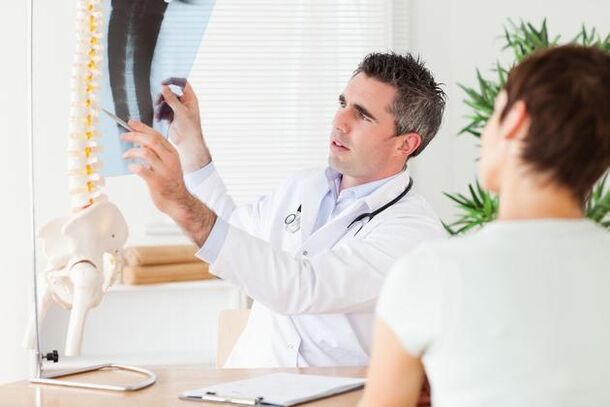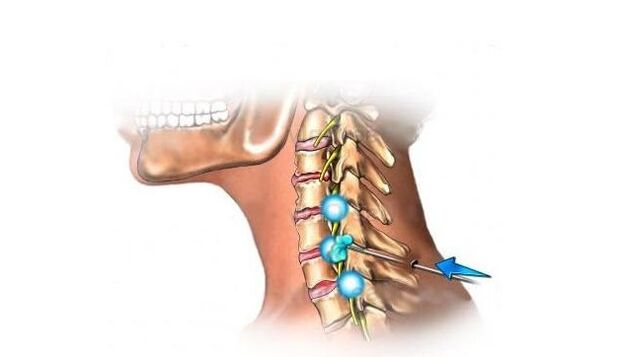Persistent headache, heaviness in the back of your head, and numbness in your hands—this is likely osteochondrosis of the cervical spine.Its symptoms may be mistaken for other conditions, such as angina or migraines.The earlier the correct condition of the disease is identified, the more successful the treatment will be.

symptoms and causes
We have to admit that this is the disease of the century.Can it be said that it was not so common before?Maybe yes.If it used to be a disease of the elderly, now it has become a disease of younger people.After all, the root cause of painful and deformed intervertebral cartilage in the neck and back is physical inactivity—sitting motionless at a desk or in front of a computer with your head down forever.After get off work, a person maintains the same posture - in the car or in front of the television at home.The result is degenerative changes in the discs that disrupt the blood supply to important arteries leading to the brain.It all started with a crunching sound in the vertebrae when turning the head, followed by persistent pain in the back of the head, neck, shoulders and forearms, and numbness in the fingers.If an accurate diagnosis has not yet been made - cervical osteochondrosis, symptoms may resemble an angina attack in that the pain radiates to the arms and sternum.It is not difficult to check it yourself: if nitroglycerin does not help, then the problem is not with the heart.Of course, as with any disease, health experiments are unpopular.

treat
Cervical osteochondrosis requires complete, comprehensive treatment and should be prescribed by an osteopath.Complex - because this disease cannot be treated with medicines or folk remedies alone.You need both, plus physical therapy and therapeutic massage.As for drug treatment, experts certainly recommend a range of so-called chondroprotectants, that is, drugs that prevent the destruction of intervertebral cartilage and restore cartilage tissue.Includes anti-inflammatory drugs.If necessary, a course of painkiller and antispasmodic injections may be given.Physical therapy performed at the same time as medication also has good results.
Therapeutic exercise and massage
It appears that patients can prescribe this part of their treatment for themselves.This is a huge mistake.Everything related to cervical spine disorders is the job of an experienced and trustworthy neurologist, osteopath, chiropractor, not an amateur massage therapist.Moreover, there are deaths caused by the crude manipulation of these "farmers".But within the framework of the article, that is, at a certain distance, only general advice can be given.Therefore, if a patient suspects that he or she has cervical osteochondrosis and experiences symptoms such as pain in the back of the neck, headache, or numbness of the fingers, he or she can relieve the condition through simple exercises.
- Sit on a chair, move gently and smoothly, and make circular movements with your head, 15 times in each direction.Don't make sudden moves, especially backwards!
- Tilt your head back and forth, and do so smoothly and carefully.
- “Mill” – hand exercises.Even if it hurts, rotate your arms back and forth 50 times (you can increase the number of times).
- Wrap your hands around your head—thumbs under your chin and fingers on the back of your neck and back of your head—and try to stretch your neck muscles and vertebrae.It will get easier instantly.
If you do these simple exercises every day, your pain will decrease significantly.As for massage, it has already been said: massage of the neck and collar area can only be performed by experts.

traditional healing methods
Unfortunately, it cannot be said that folk remedies can completely cure osteochondrosis of the cervical spine.Of course, symptoms can be relieved, but overall, you can't do it without the involvement of an expert.How to relieve neck, head and arm pain caused by osteochondrosis?Compresses made from herbs help a lot.Therefore, you can soak juicy burdock or horseradish leaves in boiling water, apply it to the painful nape, cover it with foil and wrap it in a scarf.The compress can be left on for at least a full day.This is not the case with mustard compresses: dilute 50 g of dry powder and aloe vera juice with alcohol, add a little propolis.In fact, it's recommended to use this mixture at night, and it does work, but you shouldn't let it burn.Last but not least is proper nutrition.Everyone knows that the first enemy of osteochondrosis is salt, which means that you need to strictly limit its use.Foods rich in uric acid are not recommended - thick broths and broths, bacon, sorrel, spinach.The main advice is not to let the disease get worse and to start treatment at the first sign.



















